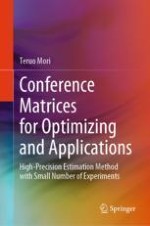2024 | OriginalPaper | Chapter
14. Optimization Comparison Between Conference Matrices and Current Method with Temperature Control System
Author : Teruo Mori
Published in: Conference Matrices for Optimizing and Applications
Publisher: Springer Nature Singapore
Activate our intelligent search to find suitable subject content or patents.
Select sections of text to find matching patents with Artificial Intelligence. powered by
Select sections of text to find additional relevant content using AI-assisted search. powered by
